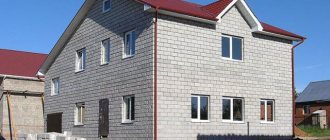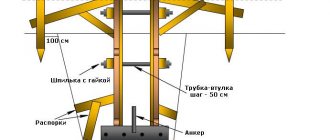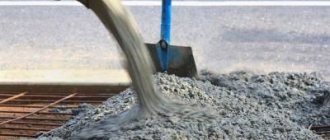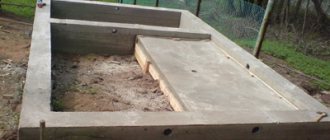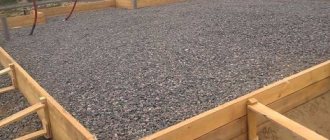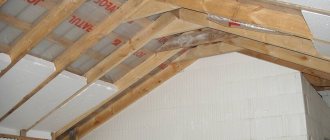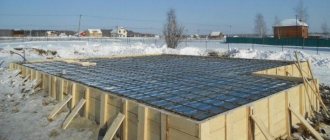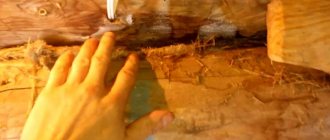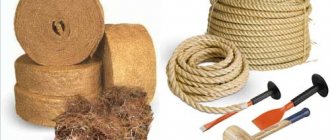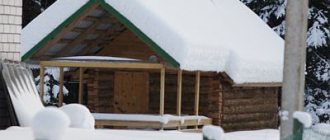One of the significant advantages of the technology for building baths from profiled timber is that it allows installation to begin at any time of the year. Including in winter, since there are no “wet” processes. However, the season when the frame assembly begins does not affect some important stages of construction and finishing. It is advisable to know about this in advance, since in some cases, if not insurmountable, then rather unpleasant difficulties may arise. This article explains how the construction of a wooden bathhouse differs in spring, summer, autumn and winter.
Construction of a timber bathhouse in the spring
Spring is the optimal season to start building with brick, foam blocks, aerated concrete, but not with timber. During this period of the year, several difficulties may arise at once. Firstly, melted and high groundwater in low areas prevents the construction of a foundation. Secondly, in early spring the daylight hours are not very long, which increases the construction time.
If the log house is assembled from profiled timber with natural moisture, then with the onset of hot and dry weather, problems with shrinkage and shrinkage may arise in a couple of months. Under such conditions, moisture will come out of the wood too intensely. If this is not foreseen and appropriate measures are not taken, shrinkage will occur unevenly, the timber will crack severely, and wide cracks will form between the crowns. The last two problems are very easy to deal with, but correcting uneven shrinkage is difficult and expensive.
Spring construction of a wooden bathhouse also has advantages. The weather is generally good - if there is any precipitation, it is short-lived. When building a log house from chamber-drying timber, after 2…4 months the bathhouse can be put into operation. Also, problems usually do not arise with access roads and storage of lumber. In early spring or late winter (in advance), there is every chance to buy timber from winter harvested forests. It contains less defects, biological damage and moisture.
Is it possible to build a bathhouse in winter - Features
You can build a bathhouse in winter from rounded logs, timber or simple chopped material. You can prepare logs in advance, but it is better to use winter forest. The main stages of building a bathhouse in winter include:
- Waterproofing a finished foundation or installing a new one.
- Assembling the box and roof.
You can do finishing and insulation after installing the finished roof; in winter it is better to do a rough one. Let's look at the features of each stage in more detail.
Foundation for a winter bath
The log house is placed on a pile foundation.
To build a wooden bathhouse in winter, you need to think through and prepare the foundation in advance. Installation work will be easier in the warm season. You can make a foundation in winter, for example, with a pile-screw foundation. Some craftsmen make tape, the price will be higher. Various additives are used to harden cement at sub-zero temperatures. It is difficult to predict how a strip foundation assembled in winter during the warm season will behave. In addition to all of the above, the ground will be frozen, making it difficult to do it yourself.
You can see more details on how to install a screw foundation in winter in the video:
Box assembly
You can assemble a bathhouse box in winter with your own hands. The installation process is no different from the usual:
- The foundation is waterproofed by laying two layers of roofing felt.
- Rows of thin slats are laid, which will enable the lower crown to better stand on the foundation.
- A lower crown of larger cross-section made of moisture-resistant aspen or larch is mounted.
- A box is made of timber or logs. The links are connected to each other using wooden dowels.
- Jute insulation is laid between the links.
- The roof is going to be rough, because in the spring the soil will begin to move and the bathhouse will shrink.
Despite the similarities with conventional construction, winter construction has its own characteristics:
- At temperatures below -25 °C, wood becomes brittle, so all work is carried out to the required level.
- The weather can change at any time so you need to be prepared to stop the assembly at any time.
- You cannot leave the bathhouse box open, as it will be covered with snow and in the spring it will turn into water, and this will lead to rapid rotting of the walls.
- It is better to buy timber or logs that have already been treated with antiseptic compounds.
- It is better to purchase material from the winter forest since the trees “sleep” and the movement of sap in the trunk has stopped. The barrel is filled with a special paraffin-like substance. Wood has lower humidity and greater moisture resistance.
Construction of a cobblestone bath in summer
In the summer, there is only one significant problem for timber construction technology - abnormal heat. Now the climate is changing not for the better, and at this time of year the temperature rises to levels unusual for our region. Because of this, the timber in the log house dries unevenly and too quickly, which can lead to the formation of deep cracks. To be as safe as possible, in the summer it is recommended to build a bathhouse from dry timber, which has compensation cuts.
Otherwise, summer is considered the right time of year for building a wooden bathhouse. Daylight hours are long, the weather is almost always “flying”. With proper organization, by the coming winter you will be able to take a steam bath in your own bathhouse. If it is built from timber with natural moisture, then over the winter it will shrink evenly, and in the spring all that remains is to apply the “shine” and use it.
Types of foundations, which one is better to choose for winter work
The most common light foundations (light because the bathhouse is usually not heavy), which are installed both in winter and summer:
- columnar;
- grillage;
- tape;
- plate;
- pile
Since all types of foundations, except piles, are built using concrete, in order to make them in winter it is necessary to add a special anti-freeze additive to the solution.
Anti-frost additive
A pile foundation requires only unfrozen soil. If you are planning to build a lightweight structure, I recommend using screw piles if the ground is not yet frozen.
It is clear that if the ground freezes in winter, the technology for both concrete and pile foundations will have to be changed.
Winter construction of a wooden bathhouse
Compared to other technologies, construction from timber in winter is the most preferable. Yes, there are some difficulties. For example, the foundation must be ready in the fall or built on stilts. The roads are swept away. Daylight hours are short and so on.
However, only in the winter season does wood naturally contain little moisture, and it freezes out of it at an optimal rate. When frost sets in outside, the relative humidity also decreases. This promotes quick and uniform drying of the wood in the log house. Microorganisms and insects do not live in such conditions, which means there will be fewer lesions and defects on the timber by the next stage.
Plus, in winter there is a greater chance of finding lumber from winter-harvested forests, getting favorable discounts, and speeding up the start of construction due to less workload for specialists.
Features of work in winter
In addition to using anti-frost additives, if a slab is made as a foundation, it must be heated, because one of the components of the solution is water and if it crystallizes in the cold, the concrete will not “set” and will not acquire the required hardness.
Problematic foundations.
When building foundations by professional teams in winter, tents are usually erected above the foundation, which are capable of maintaining the temperature, and heat guns are installed inside the tents.
The most important requirement is a temperature above 3 degrees on the concrete surface. Another technological technique is to wrap the formwork in thermal insulation materials.
Tents protect the concrete surface from above, but if you are making a strip foundation, it must be insulated from the sides, for example, with mineral wool.
Since serious frosts have not yet begun, I ordered a concrete mixer with an anti-freeze additive from the factory. Now any concrete plant produces such concrete.
If I need to fill some niches, I will add such an additive to the concrete mixer when the ambient temperature at night is less than 5 degrees.
"Underwater rocks"
Firstly, at ambient temperatures below -20°C, lumber becomes very fragile. This significantly complicates their processing. In particular, during the manufacture of connectors, you may encounter excessive cracking of the material, chipping and other damage.
Secondly, the bathhouse must be built on a foundation, the arrangement of which becomes significantly more difficult in winter. If it is a monolithic strip, then pouring it requires concrete with modifiers and individual heating. And this always costs a pretty penny. In an area with frozen soil, even preparing a trench can cause considerable difficulties.
Thirdly, not every construction team will agree to work in such harsh conditions. The process may be repeatedly interrupted due to bad weather, which will result in loss of time and other resources.
Selection and procurement of building materials
The construction of a sauna can be made from various materials, but real lovers of the steamy spirit tend to use natural wood. As you know, wood is a living material characterized by certain features:
- During the period of growth and active nutrition, the humidity of the tree trunk is 60 to 70%;
- Natural wood contains starch, which causes it to rot;
- The tree is one of the favorite habitats of insects, which can significantly deteriorate its quality;
- Moisture, heat and oxygen cause the spread of mildew and mold.
Each of the listed processes is natural and can cause negative consequences for a wooden bath. They mainly occur during warm seasons. Wood harvested in the autumn-summer and spring periods is coated with a transport antiseptic. However, it cannot be guaranteed that it will be able to destroy all mold. During this same period, active evaporation of moisture occurs, which causes the formation of cracks in the material.
In winter, the tree almost does not grow, is characterized by a low content of starch and moisture, and is resistant to the formation of cracks and tears. During this period, all bacteria, bugs and pests die in it. A tree cut down in winter is not subject to rotting, it is stronger and more durable.
How modern professionals work with logs
Experts share their experience:
- When preparing and laying the log house, we work on our own construction site. Here we use covered hangars, which allow us to prepare logs, debark them and prepare them for drying.
- Working under a roof allows you to exclude weather factors and build log houses in any season, without looking at weather forecasts and stereotypes.
- Indoor hangars make it possible to insulate the log house even in the rain using Euro-flax and flax-jute, as well as to perform rough grinding of the corners and grooves of the logs.
The use of special covered areas makes it possible to prepare logs for transportation and assembly in any weather. Depending on the size of the log house, work on the site takes only 2 to 7 days.
Hire builders or do it yourself
I hired builders for my dacha several times. But every time they left a lot of “shoals”. Some of them can be corrected, but most are not even visible, since they are in hidden work (in walls, ceilings, foundations).
So I prefer to do the foundation and everything else myself.
If you do hire builders for foundation work, at least make sure that they work only in warm weather. If this is not possible, consider installing tents and heat guns.
When choosing builders, do the following:
- sign an agreement with a legal entity or individual entrepreneur;
- transfer money through a bank;
- do not pay more than half in advance to cover only the costs of materials;
- pay incrementally, in parts;
- invite an independent builder who will monitor the progress of construction, if you are not a “ruh” yourself; It’s better to pay him extra than to deal with a cracked foundation later;
- Before concluding a contract, look for reviews about this team of builders, look at the projects they have done and, possibly, contact their clients.
If you have ever poured a foundation in winter, please share your impressions.

